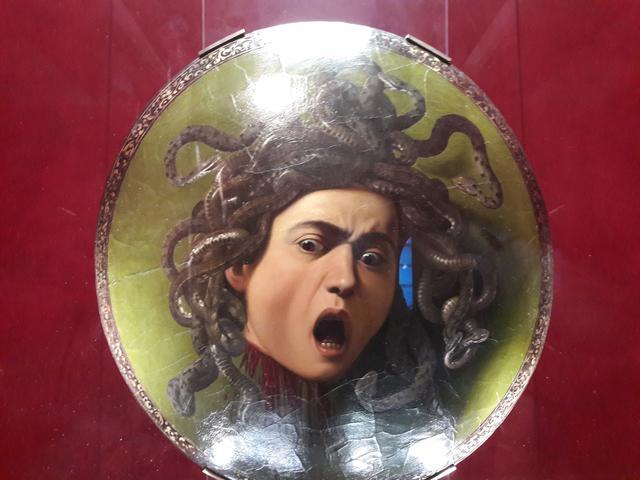Medusa

Michelangelo Merisi da Caravaggio created two versions of Medusa: one in 1596 and the other in 1597, representing the exact moment Perseus executed her. He plays with the concept by replacing Medusa's face with his own, as an indication of his immunity to her terrible gaze. Due to its strange and intricate design, the painting is said to complement Caravaggio's unique fascination with violence and realism. It was commissioned by the Italian diplomat Francesco Maria del Monte to be given to the Grand Duke of Tuscany, and is now in the Uffizi Museum in Florence without a signature.
The chemical composition of this paint is extremely complex. Caravaggio used a circular shield made of poplar wood as the base for this painting. The shield was covered in linen, onto which four different layers of paint, known as preparation layers, were added to help create the base of the painting. On top of the preparation layers, an additional layer was applied to make the background appear more reflective. On top of this reflective layer, another layer (the green background shown in the painting) was applied: this layer consists of a mixture of verdigris and yellow lead-tin paint. On top of this background layer, three more layers consisting of mixtures of drying oils, turpentine and putty with traces of beeswax were applied to form the paint. Finally, a few more coats were added to help preserve the paint.
The level of gloom and realism is well portrayed in this painting, creating a three-dimensional appearance. Medusa's cheeks and jaw are elongated to complement the nature of the painting. Caravaggio's idea of using a convex shield as a canvas was to paint it from Perseus' point of view; In the case, Medusa's reflection appeared on his shield, just before killing her.
© Tourblink